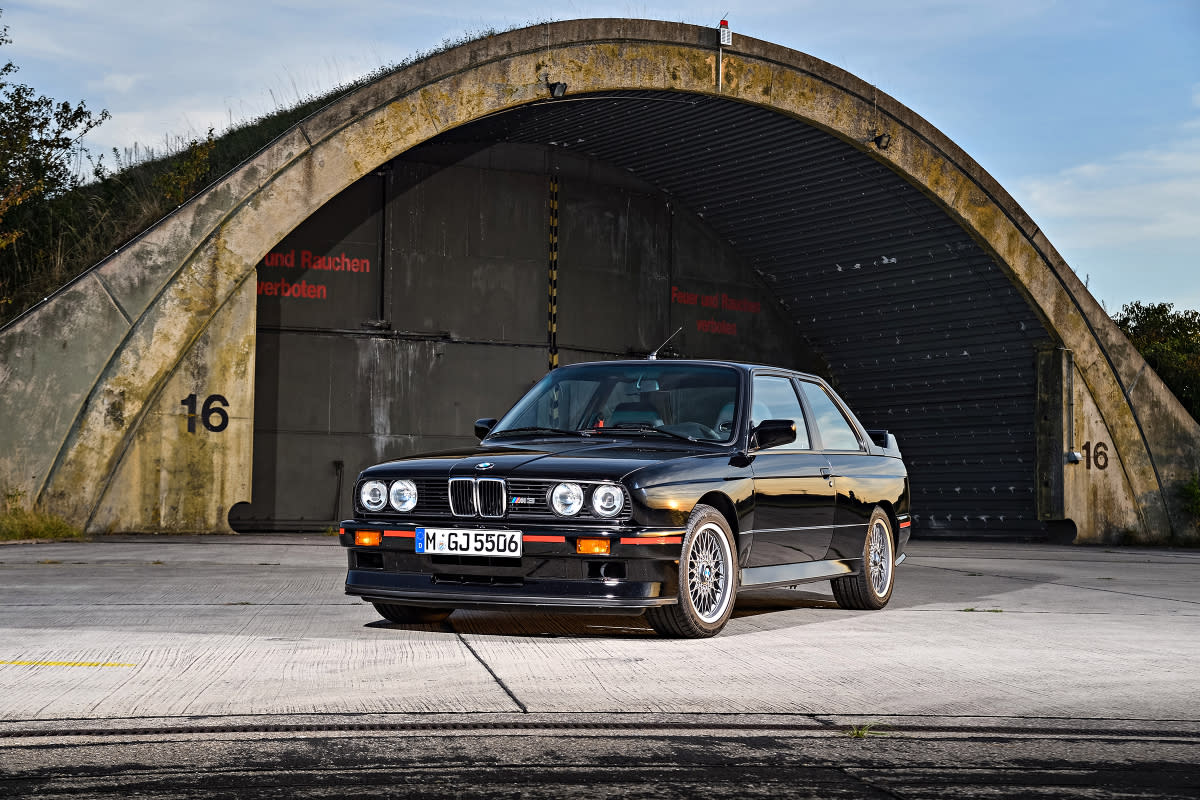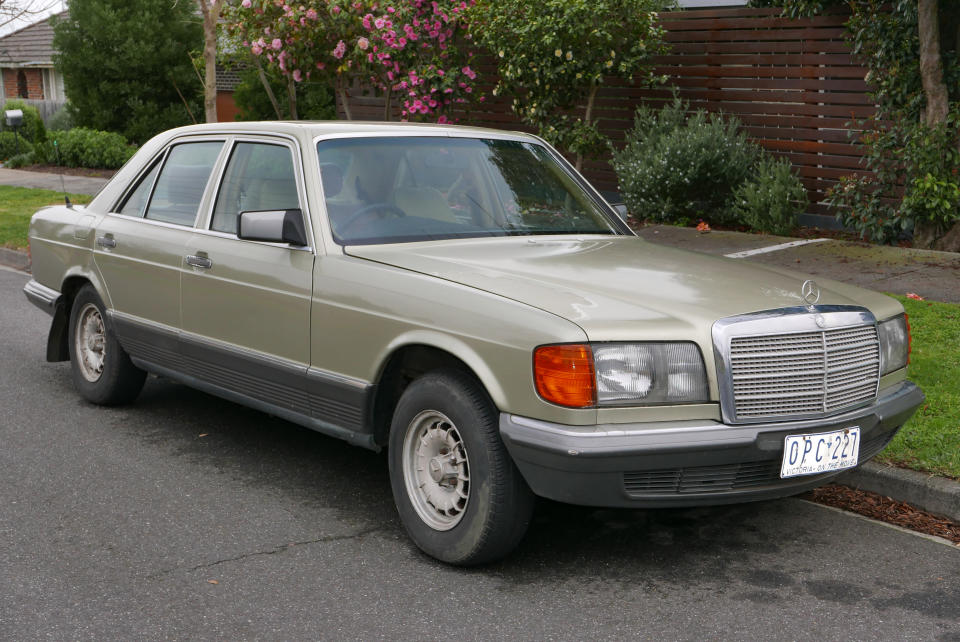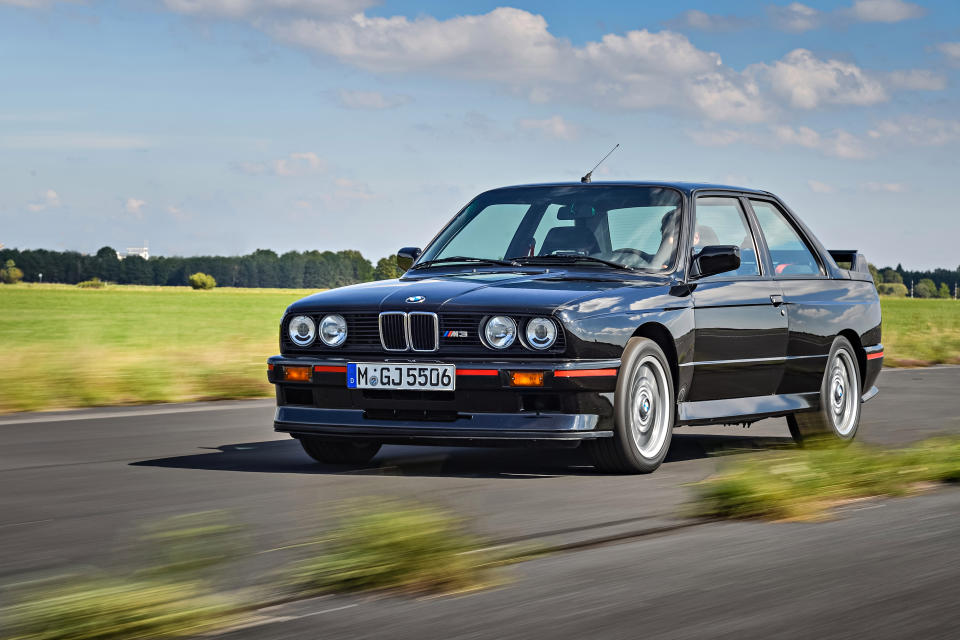The Models That Launched 5 Foreign Carmakers Into the American Mainstream

Is it too simplistic to look at some of America’s most prominent import luxury brands and tie their success to a single watershed model? Not at all. In fact, it’s safe to say that each high end automaker currently trading prestige for cash in the United States owes its place at the table to a well-timed vehicle that generated the critical mass required to shift from bit player to big time.
These cars and (and trucks) each shook up the status quo at the time of their arrival, introducing new and unheard of combinations of features, capabilities and driving experiences, thus providing a compelling reason for a fresh crowd of curious customers to vote these brands to the top of the luxury heap with their dollars.
Which German, British and Japanese luxury car companies offer the best examples of a single model that made all the difference with buyers in the United States? Here are five vehicles that pushed their respective brands firmly into the American mainstream.

The 1990-1994 Lexus LS 400
In order to have any chance of being taken seriously alongside the German, British and American brands that dominated luxury sales in the United States, Toyota knew that it had to over-deliver with its nascent Lexus nameplate. After all, the idea of a high-end Toyota — while commonplace in its home market — seemed laughable to U.S. customers in the 1980s, when the brand was more strongly associated with efficient and value-focused family fare.
There were no titters from the crowd when the Lexus LS 400 rolled onto the stage in Detroit at the North American International Auto Show at the end of the decade, however. The product of nearly six years of secretive testing, prototyping and benchmarking against the world’s best flagship luxury sedans, the Lexus LS represented a billion dollars of investment distributed across the nearly 4,000 Toyota employees who had been assigned to the vehicle’s development.
To say that the first Lexus was over-engineered would be an understatement. Close to 1,000 versions of its aluminum block 4.0-liter V8 engine were built and tested before the design was finalized, ensuring that its four-cam design ran smoother and longer than the competition. Everything about the car was engineered to minimize vibrations and maximize calm, the transmission was computer-controlled and durability was prioritized by the laser-welded Lexus in a way no other automaker could claim.
The LS 400 proved to the world that a high-end car could execute the latest technologies without the finicky maintenance requirements expected from other luxury fare, and that it could advance the current state of the art in terms of gadgets, comfort features and driving refinement without pushing pricing into the stratosphere. In many ways Lexus was offering 110% of what its competitors had on sale for 60% of the price. It was an irresistible lure to many American drivers tired of questionable Cadillac and Buick build quality and unwilling to tolerate European sticker shock, and it launched a luxury empire that endures to this day.

The 1980-1991 Mercedes-Benz S-Class
It’s safe to say that Lexus engineers drew most of their inspiration for the design of the LS 400 from the W126 generation Mercedes-Benz S-Class. This titan of luxury provided the ruling class with an unassailable chariot that has since been recognized as perhaps the final Silver Star design to truly qualify as a modern classic.
The W126 was also the last Mercedes-Benz to be designed to a standard, and not a price or market segment, which meant it incorporated every single engineering and production trick known to the German giant at the time, cost be damned. The end result was a virtual battleship of a luxury sedan and a car that set the standard in every conceivable automotive metric.
While Mercedes-Benz had long been a known quantity in the United States, it was the 1980-1991 S-Class that truly established the brand at the pinnacle of premium pyramid. With a range of six-cylinder, turbodiesel and V8 engines, there was a W126 for almost everyone, and its available extended wheelbase made it equally friendly for the crowd who preferred to be driven rather than drive themselves. The car’s extended lifespan in dealerships was compounded by its enduring reliability and relative ease of repair compared to more complex models that followed. More than 20 years after the W126 left production, there were still well over 100,000 examples registered in America alone.
Mercedes-Benz never built a vehicle like the W126 again — the costs of a similar engineering achievement had skyrocketed by the end of the ’80s, as evidenced by the spend undertaken by Lexus in developing the LS 400 — but it didn’t matter. The reputation cemented by this generation S-Class carried the brand through a more turbulent period in the 1990s and early 2000s, maintaining its status as the standard for luxury flagships the world over.

The 1982-1994 BMW 3 Series
BMW’s journey from niche market Euro star to global luxury powerhouse hinges on a single automobile: the E30 generation 3 Series. Introduced in the early 1980s, this boxy entry-level sport sedan was solely responsible for carving out the American foothold BMW needed to fund its dreams of joining the international automotive elite.
Never before had an automaker so expertly combined the kind of telepathic handling and lively straight-line performance evinced by the 3 Series with a level of comfort and technology that elevated it well above more pedestrian fare. Offered to Americans in both two-door and four-door models as well as a convertible, the E30 was remarkably versatile. It quickly became the perfect driveway accessory for old money seeking a graduation gift for their recently matriculated spawn, as well as nouveau riche lawyers, bankers and art world dilettantes looking to live out their yuppie fantasies.
Not only did the E30 3 Series finally give BMW the volume seller that funded the company’s expansion for the next three decades, it also introduced the brand’s Motorsport division to the masses. The E30 M3 embodied everything the automaker had learned from its years of competitive racing programs and brought the concept of a genteel European hot rod to the mainstream. The massive profits generated by today’s wildly successful and diverse M Division can be traced directly back to the E30’s popularization of the practical weekend race car you can drive to work on Monday morning.

The 1996-2001 Audi A4
In the early 90s, Audi was a brand in trouble. Victimized by a safety scandal surrounding the Audi 5000 sedan (an issue concerning unintended acceleration that was entirely manufactured by popular news program 60 Minutes), Volkswagen’s would-be luxury marque needed a fresh start in the United States if it had any hope at all of surviving the bad publicity and legal challenges that had followed.
Enter the 1996 Audi A4. After two years of European sales, Audi decided it was time to introduce Americans to a car that has no link whatsoever to any of its previous four-doors. The template was lifted from Volkswagen (which supplied the platform that underpinned its own successful Passat family car), but it was given crucial Audi identifiers in the form of “Quattro” all-wheel drive, a host of more powerful engines and a little bit of Porsche cross-pollination in the Tiptronic automatic transmission department. Altogether, this created a sedan that made a compelling case as a BMW and Mercedes-Benz alternative.
It’s impossible to overstate how crucial the success of the first-generation A4 was to the continued existence of Audi operations in America. The car was the first Audi to be taken seriously by moneyed buyers seeking a luxurious daily driver, and it distanced itself better from its Volkswagen roots than the 4000, 80 or 90 models that had preceded it. By the year 2000, no one was making reference to the automaker’s earlier safety woes, and Quattro had become a synonym for all-wheel drive across the northern and eastern parts of the country that became Audi’s most profitable strongholds.

The 1987-1995 Land Rover Range Rover
Although production began at the end of the 1960s, it took nearly 20 years before Land Rover recognized the potential of the American luxury SUV market and begin officially offering its go-anywhere truck in the New World.
Prior to 1987, Land Rover’s reputation on this side of the Atlantic had rested entirely on the enthusiastic support of a handful of grey-market importers who fed a small but exceptionally wealthy pocket of buyers stretching from Martha’s Vineyard to small-town Colorado who were enamored of the truck’s British country squire capabilities. Once a dealership presence was established, the chatter about the Range Rover’s exceptional off-road capabilities and substantial day-to-day driving comforts made it a must-have for those willing to pay the somewhat extortionate amounts being asked for by Land Rover’s bean counters.
Land Rover installed a host of luxury gear in American Range Rovers that hadn’t been available overseas in more spartan versions of the vehicle, and each passing year brought further refinement and features to a platform that, once Jeep’s equally plush Grand Wagoneer quit the scene in 1991, had no peer. Not only did the substantial flow of funds from U.S. Range Rover sales provide Land Rover with the foothold it needed to begin selling a wider array of models there, but it also convinced a long list of eventual rivals — including Mercedes-Benz, Lincoln and Lexus — to build rugged off-roaders of their own, kicking off the modern luxury SUV gold rush.
Today, Land Rover is the piggy bank that keeps corporate partner Jaguar afloat, and none of that would have been possible without the success of the ’87 Range Rover.
More Like This
The post The Models That Launched 5 Foreign Carmakers Into the American Mainstream appeared first on InsideHook.
The article The Models That Launched 5 Foreign Carmakers Into the American Mainstream by Benjamin Hunting was originally published on InsideHook.

